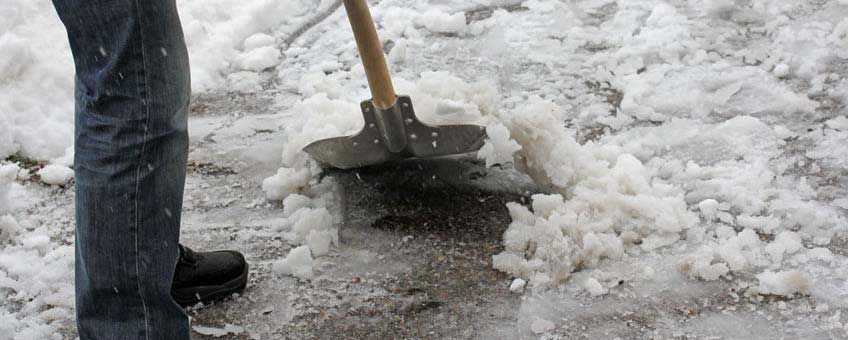
January 11, 2016 | Personal Injury, Premises Liability | Fall, Holiday Season, Ice, Personal Injury, Slip, Snow, Weather, Winter
Who is responsible if you were injured by a fall on an icy walkway?
As we settle into the long winter ahead, we prepare for an increase in the numbers of injuries related to falls due to snow and ice. There is a common misconception that a property owner is automatically responsible for any injury that occurs on his property. In New York State, the law is very specific regarding the obligations of property owners to provide safe conditions.
If an injured party believes that the property owner is responsible for their injury, they will have to prove that the property owner either caused or created a dangerous condition or had actual or constructive notice of this condition.
One of three elements can show negligence on the part of the property owner.
-
The defendant caused or created the dangerous condition that led to the fall.
When snow and/or ice are involved, negligence can be difficult to prove in court. A property owner cannot be held responsible if the fall occurs while snow, ice or rain is still falling. It is not considered reasonable to expect a property owner to provide a perfectly clear and safe path while there is an ongoing weather condition. The law allows a property owner a reasonable amount of time to remove the hazardous condition after the weather condition has ended. If a slippery condition inside a building is due to visitors tracking in water while it is raining, the property owner is generally not deemed to have acted negligently.Property owners are responsible not only for the removal and treatment of hazardous conditions created by weather on walkways, driveways and parking lots, but also for defective components on buildings that can create unsafe conditions, such as leaking gutters that enable ice to form on pedestrian walkways. One common scenario where this element can be proven is when there is a defective gutter leaking water onto the sidewalk or from an improperly positioned downspout that directs water into an area where pedestrians will be walking.
-
The defendant had “Actual Notice” of the dangerous condition.
The first of two ways to prove knowledge is referred to by the law as “actual notice.” This simply means that someone notified the building management of the problem. Before claiming that the property owner acted negligently, it must not only be proven that they were made aware, or actually put on notice, of the dangerous condition, but that they had a reasonable time to remedy the condition and failed to do so.
-
The defendant had “Constructive Notice” of the dangerous condition.
As stated above, if the hazardous condition was created by inclement weather and a reasonable amount of time has passed, a property owner is expected to have cleared the pedestrian walkways to ensure that people can walk safely on the property. If the property owner allowed a hazardous condition to exist long after a reasonable period of time had passed to correct it, then the owner may be held liable for injuries others suffered as a result of this condition, as he would have been deemed to have caused or created it. The constructive notice in this case refers to that fact that a property owner is aware that hazardous conditions exist because there is inclement weather that caused it and not a person or defective building, therefore it is not necessary for someone to give the property owner notice in order to make him aware that a hazardous condition exists.
These are also situations where “actual notice” cannot be proven, but based on the overall details of the situation, the defendant should have known about the dangerous condition. This is often a matter of time. If several days or a week has passed since a snow storm and yet the main entrance to the building is still covered in snow or ice, it is reasonable to conclude that the owner or management were aware of the problem and should have taken action to clear the path properly.
One thing to keep in mind, is that winter temperatures can cause ongoing weather conditions. An example is higher daytime temperatures that cause snow or ice to melt back on to cleared walkways and then refreeze overnight. While temperatures remain below freezing, it is very difficult for property owners to combat frozen snow and ice, as well as not necessarily having either constructive or actual notice that the snow or ice has melted onto these walkways and then refrozen. A property owner may have used salt and/or sand, but still may not be able to completely melt all the snow or ice. Pedestrians must also proceed with caution when hazardous weather conditions, including below freezing temperatures exist.
Other factors that may be cause to find a property owner acted negligently:
If a walkway is cleared, but was not cleared well, this may give pedestrians a false sense of security and create an even more dangerous situation. For example, if a walkway is clear and dry leading up to a building, but there is a small patch of ice just in front of the entrance to the building, it is likely that someone will slip and fall. A dangerous situation can also occur if there is a low spot in the pavement. As snow melts during the day, it may accumulate in that spot and freeze as the temperature drops at night. In that case, the owner must use sand or salt to ensure that a dangerous situation is not created.
Private Homes
If a homeowner chooses to clear a path, they create a responsibility to do so with care. When approaching a private home to find that no path has been cleared, you can have no reasonable expectation that it is safe to proceed. Private homeowners are not legally required to clear snow from their property.
The Bottom Line
The best thing you can do is try your best to avoid injury in the first place. Take extra care when there could possibly be dangerous conditions and walk slowly when there is doubt.
This article presents only an overview of some of the factors that come into play for this type of case. The only way to know for sure whether or not you might have a case is to speak to an attorney.

